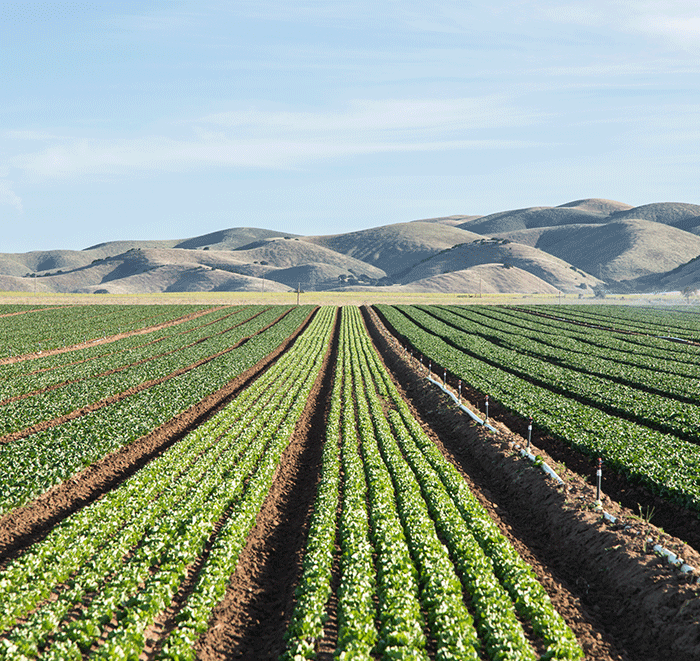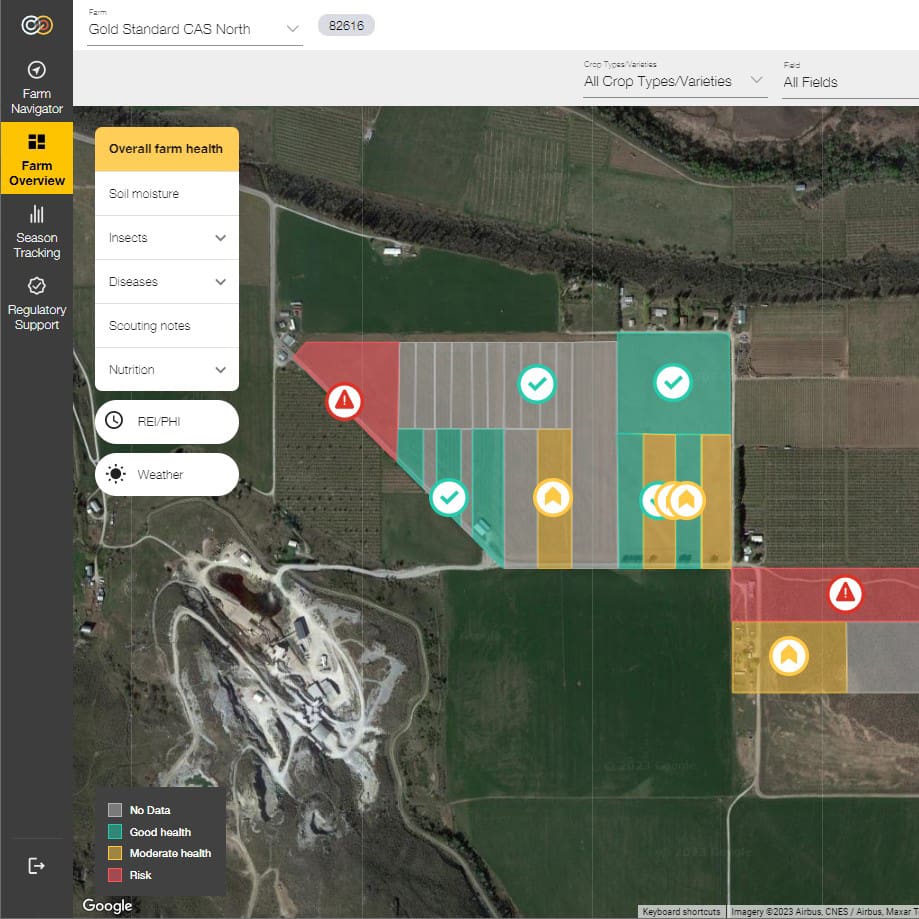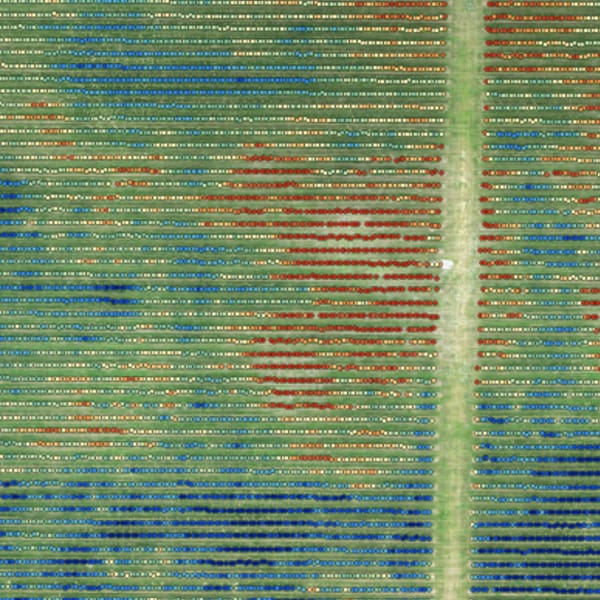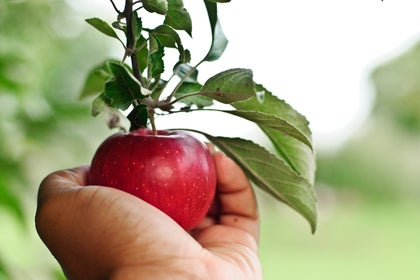

Revolutionizing the nutrition side of the apple business
“If you can’t measure it, then you can’t manage it,” said Peter Drucker, the man famously credited with inventing modern business management.
Today, effective crop management requires data to measure and manage plant, soil and water conditions so sound agronomic decisions are made based on fact rather than emotion.
“Farmers are inundated with data; they’re drowning in it,” said Dennis Devitt, Wilbur-Ellis specialty crop manager and statewide viticulturist based in Michigan.
Across Wilbur-Ellis, field technology and nutrition experts are working to integrate data platforms to help growers and consultants manage and interpret data that will improve production efficiency and orchard block uniformity.
In Michigan, the team’s goal is to help apple growers increase fruit quality and yield to maximize profitability.
CropSights delivers real-time, actionable insights to help improve yield and fruit quality.
“CropSights is one of the tools Wilbur-Ellis has developed so growers don’t have to go to five different websites to access their farm data,” said Devitt. The digital platform helps growers access real-time and historical information so they can maximize the value of their fields and orchards.
“CropSights monitors real-time crop health including soil moisture, pests and disease, plus nutrition sampling data for soil and plants,” said Devitt. It also makes it easy to find scouting notes, visually indicates the status of REI/PHI (restricted-entry interval and preharvest interval) at the block level, and it enables growers to track their budget vs. spend.
“With CropSights, we can set pest thresholds by orchard block to show up as green, yellow or red,” said Devitt. “Then when we see blocks go red, we can assess the situation and prescribe a solution. Maybe the trap count was above threshold, for example, and the grower needs to spray.”
Still, Wilbur-Ellis knows many growers don’t have the time or interest to interpret crop production datasets.
“That’s why we’re here,” said Devitt. “Our field tech and nutrition experts will meet with growers in person or clearly explain results through email and provide recommended steps to improve fruit health and maximize profitability.” The CropSights customer support team is also available to work one-on-one with growers using the platform.
Irrigation enhances both water and agronomic management.
The Michigan team is also helping growers integrate irrigation management technology and adopt drone imagery to increase efficiency and improve outcomes.
“Wilbur-Ellis is working to revolutionize the nutrition side of the apple business,” said Megan Barlow, Wilbur-Ellis technical nutrition agronomist. “We’re helping growers understand how to irrigate not just for proper water management, but also for agronomic benefits.”
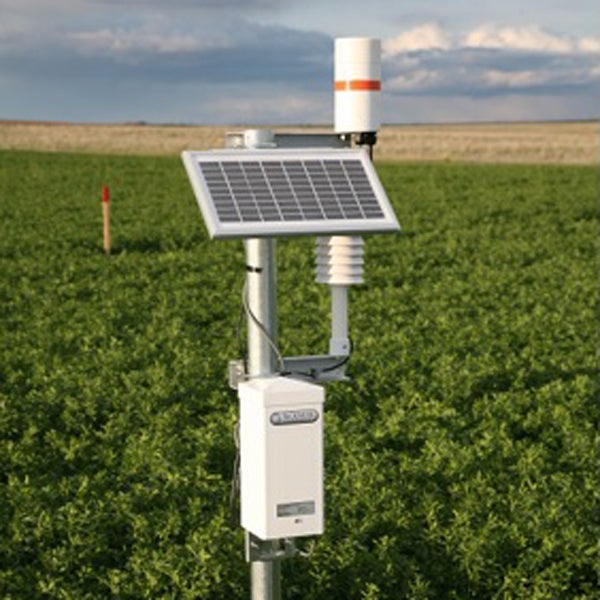

Image Source: Probe Schedule
With an advanced degree in geological and earth sciences, Barlow conducts water and soil chemistry research to help growers find proactive fertility and water management practices that maximize their return on investment.
“We’ve been monitoring three apple varieties monthly for the past couple of years—collecting soil, water, leaf tissue and fruit samples—to identify nutrient deficiencies and trends while building varietal and regional databases,” Barlow said. “This consistent, detailed approach has led to a lot of discoveries, and we’ve adjusted fertility programs and seen improved plant-nutrient uptake.
“If a grower doesn’t have the proper field capacity, they can’t be a good steward to help the plant uptake nutrients,” Barlow explained. “The soil solution is a grower’s potential nutrient reservoir. So, if they’re at or below the desired nutrient or moisture level, they’re automatically creating a stress or deficiency for that plant.”
Using science-based datasets and technology like Probe Schedule soil moisture probes, Barlow and the team can find and correct risks that affect yield.
“Growers are truly fortunate in Michigan to have access to the Great Lakes, the largest freshwater resource available in the world,” said Ryan DeMorrow, agronomic technology sales advisor, Wilbur-Ellis. “But we still sometimes have little to no natural moisture. So, it’s important to use soil moisture probes to figure out the exact level of water in the soil and then deliver just the right amount of water, without under- or over-watering.”
Field technology expert DeMorrow said Probe Schedule maximizes irrigation efficiency and improves block uniformity by helping growers identify the best times to irrigate crops and apply nutrients.
Probe Schedule reports are available conveniently through the CropSights platform.
Drone imagery delivers an overview of fruit-size status, helps forecast growth throughout the season.
High-resolution, aerial drone imagery is one of the most precise ways to detect health variance across an orchard block. As such, the Michigan team is using drone technology more and more to help growers map their orchards before and after planting to collect in-depth and comprehensive views of the crop’s physical properties, nutrition levels, pest infestations, and available plant water and fertility—and doing so earlier than ever before possible.
“Drones are the future,” said Barlow. But they’re also incredibly valuable tools right now.
Drones provide full visibility of the plant count in each orchard block—by crop and cultivar—and they offer a comprehensive pest and disease monitoring solution. Drones also easily identify underperforming areas like tree gaps to be replanted, pest infestations to be managed, or lower tree transpiration that requires irrigation.
“Drones are designed to show the uniformity of a grower’s irrigation strategies and will automatically detect irrigation problems,” Barlow explained. “Using detailed drone maps, we get the equivalent of personally inspecting every tree, but without all the time spent in the field.”
Barlow, DeMorrow and Devitt evaluate fruit growth throughout the season and translate the drone maps and data into digestible information that gives growers a full understanding of their past, current and future potential yield.
“By forecasting fruit size throughout the season, we can better control where the season will end and maximize the grower’s potential of reaching optimal returns,” Barlow concluded.
Wilbur-Ellis is a recognized leader in precision agriculture technology and is heavily invested in innovative technologies and methods that help customers grow their businesses. Combining the holistic insights provided by CropSights with drone imagery and irrigation management technology like Probe Schedule, the Michigan team is stewarding better agronomic and irrigation water management to improve tree health, crop quality and yield potential. Visit a local retailer to learn more about solutions that may work for you.

